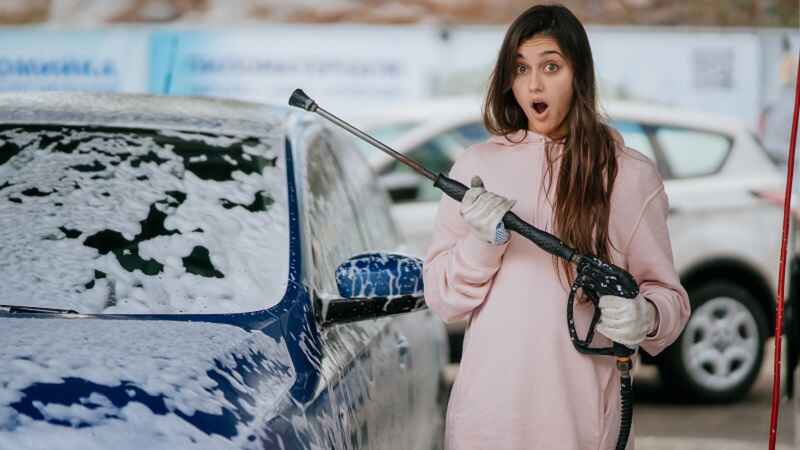Keeping your home’s exterior, driveway, deck, or patio looking fresh and clean can be a challenge. Dirt, mold, algae, and stains build up over time, dulling the appearance of your property. That’s where power washing comes in. A power washer is one of the most effective tools for restoring surfaces, improving curb appeal, and even prolonging the life of outdoor materials.
In this comprehensive guide, we’ll explore the best power washing tips that will help you get professional results whether you’re cleaning your siding, deck, or concrete. By the end, you’ll know exactly how to use your power washer safely and effectively.
What is Power Washing?
Before diving into power washing tips, it’s important to understand what power washing actually means. Power washing (sometimes called pressure washing) uses a high-pressure stream of water to remove dirt, grime, mold, and stains from surfaces. Unlike a simple garden hose, a power washer delivers water at much higher pressures—ranging from 1,300 to 4,000 PSI (pounds per square inch).
-
Pressure Washing vs. Power Washing: The terms are often used interchangeably, but technically, power washing uses heated water, while pressure washing relies on cold water. The added heat makes power washing especially effective for grease, oil, and stubborn grime.
Knowing this difference helps you choose the right method for your cleaning needs.
Why Power Washing is Important
A lot of homeowners think power washing is only about appearances, but the benefits go far deeper. Here’s why you should consider regular cleaning:
- Boosts Curb Appeal – A clean driveway, deck, and siding make your home instantly look newer and more attractive.
- Prevents Damage – Mold, algae, and mildew can slowly damage wood, vinyl, and concrete. Power washing removes these threats.
- Saves Money – By preventing decay and damage, you save on costly repairs or replacements.
- Increases Property Value – A well-maintained property often sells for more because it looks fresh and cared for.
- Health Benefits – Removing mold, mildew, and allergens improves air quality around your home.
With these advantages, it’s easy to see why power washing is more than just a cosmetic upgrade.
Essential Equipment for Power Washing
Before applying the power washing tips, make sure you’re equipped with the right tools. Here’s a breakdown:
-
Power Washer Machine – Available in electric (great for smaller jobs) or gas-powered (best for heavy-duty work).
-
Nozzles & Attachments – Different spray tips provide various pressure levels and angles.
-
Red (0°): Very powerful, for stubborn stains.
-
Yellow (15°): For concrete, brick, or metal.
-
Green (25°): General cleaning for decks, siding, patios.
-
White (40°): Gentle cleaning, good for windows or delicate surfaces.
-
Black (Soap): Used to apply detergent.
-
-
Detergents & Cleaners – Choose surface-specific cleaning solutions (wood cleaner, concrete degreaser, etc.).
-
Safety Gear – Goggles, gloves, and sturdy shoes protect you from high-pressure water and debris.
Investing in the right gear makes the job safer and more effective.
Power Washing Safety Tips
Power washers are powerful machines. Without proper precautions, they can damage surfaces—or worse, cause injury. Follow these safety power washing tips:
- Never point the nozzle at people, pets, or yourself.
- Start with the lowest pressure and work your way up.
- Test a small hidden area before cleaning the whole surface.
- Maintain a safe distance (usually 6–12 inches from the surface).
- Avoid using a ladder while power washing—kickback from the spray can make you lose balance.
Safety should always come first when using high-pressure equipment.
Step-by-Step Guide: How to Power Wash Like a Pro
Now let’s get into the practical side. Here’s a step-by-step process for effective cleaning:
Step 1: Prepare the Area
Remove outdoor furniture, décor, and plants.
Cover nearby outlets, electrical fixtures, and delicate plants with plastic.
Step 2: Select the Right Nozzle
Choose the correct spray tip depending on the surface you’re cleaning. For example, a 25° or 40° nozzle works best for siding, while a 15° nozzle is good for concrete.
Step 3: Apply Detergent
Switch to the soap nozzle and apply detergent evenly.
Let it sit for 5–10 minutes (don’t let it dry).
Step 4: Power Wash the Surface
Switch to the appropriate nozzle for the surface you’re cleaning. Use long, even strokes and slightly overlap each pass to avoid streaks. Keep a steady distance throughout to achieve a uniform finish.
Step 5: Clear the Surface
Once washing is complete, rinse away all detergent and debris, moving from the top down. This step-by-step process remains one of the most effective power washing tips for beginners.

Power Washing Tips for Different Surfaces
Every surface requires a slightly different approach. Here’s how to clean each one:
1. Power Washing Driveways & Concrete
Concrete is durable but porous. Over time, it absorbs oil stains, dirt, and mildew.
-
Use a 15° nozzle for stubborn stains.
-
Pre-treat oil spots with a degreaser.
-
Rinse thoroughly to avoid streaks.
2. Power Washing Decks & Patios
Wood and composite decks need a gentle approach.
-
Use a 25° or 40° nozzle.
-
Keep the nozzle at least 12 inches away.
-
Move with the grain of the wood.
3. Power Washing House Siding
Vinyl, brick, and stucco all benefit from power washing.
-
Use a 25° nozzle for vinyl or painted surfaces.
-
Always spray downward to prevent water from getting under siding.
-
Avoid high pressure on stucco, as it can crumble.
4. Power Washing Fences
-
Use medium pressure with a 25° nozzle.
-
Apply wood cleaner if the fence is moldy or gray.
5. Power Washing Outdoor Furniture
-
Use a gentle nozzle (40°).
-
Avoid harsh cleaners unless specifically designed for furniture materials.
By tailoring your approach, you’ll avoid damage while getting the best results.
Common Mistakes to Avoid
Even with good intentions, homeowners often make mistakes that reduce effectiveness or cause damage. Avoid these pitfalls:
-
Using too much pressure on wood, windows, or siding.
-
Holding the nozzle too close to the surface.
-
Power washing painted surfaces without checking if the paint is stable.
-
Ignoring safety gear.
-
Letting detergent dry before rinsing.
Avoiding these mistakes is one of the smartest power washing tips for protecting your property.
Eco-Friendly Power Washing Tips
If you’re concerned about the environment, here are some greener approaches:
-
Use biodegradable detergents.
-
Capture runoff if you’re washing near storm drains.
-
Use less detergent and rely more on water pressure.
-
Clean in cooler hours to reduce water evaporation.
Eco-conscious cleaning ensures you’re protecting both your home and the planet.
Should You DIY or Hire Professionals?
While many homeowners can tackle small jobs themselves, there are times when hiring a professional makes sense.
-
DIY Power Washing: Cost-effective, great for small areas like patios, driveways, or fences.
-
Professional Power Washing: Best for large homes, tall buildings, or delicate surfaces where expertise is required.
A good rule of thumb: If you’re not confident about the surface or the level of dirt, hiring professionals ensures the job is done safely.
Maintenance After Power Washing
After you’ve cleaned your property, extend the results by:
-
Sealing driveways and decks to prevent stains.
-
Applying protective coatings to siding.
-
Scheduling seasonal washes (spring and fall are ideal).
These steps keep your property looking good year-round.
Final Thoughts on Power Washing Tips
Power washing is one of the easiest and most effective ways to restore your property’s beauty and protect it from long-term damage. With the right equipment, safety precautions, and knowledge, you can achieve professional results on your own.
From choosing the correct nozzle to avoiding common mistakes, these power washing tips will guide you toward a cleaner, brighter, and healthier home. Whether you take the DIY route or call in experts, your property will thank you with years of improved durability and curb appeal.
